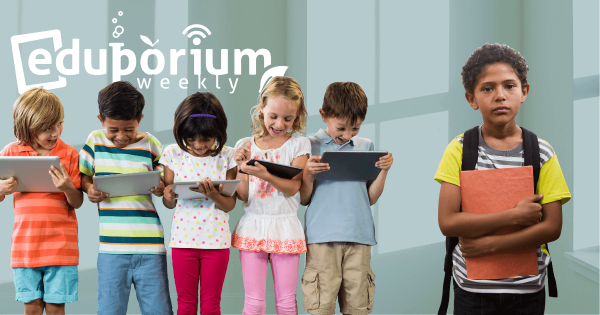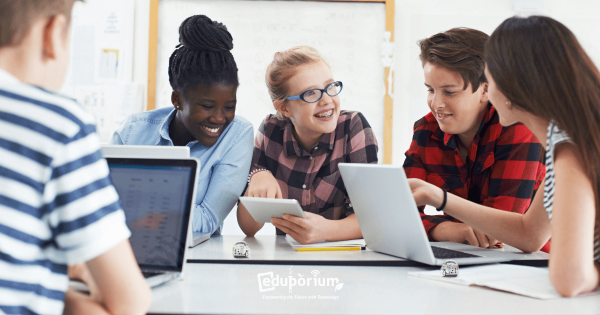Particularly since the pandemic began, educational leaders and classroom teachers have had to rethink a lot of their instructional strategies. And, one of the biggest focus areas has been around SEL and ensuring all students feel comfortable expressing their thoughts among their peers—something that’s done a lot to bring conversations about empathy into the classroom.
Coronavirus
-
Eduporium Weekly | The Digital Divide And Learning
It has now been slightly over three years since the pandemic first shook up the education world. Beyond initial struggles with administering emergency instruction and too many parents worrying about kids losing academic and social development, another key factor emerged. We knew there was a big digital divide among our students, but didn’t realize how bad it really was. -
CARES Act And Education: Using Emergency Relief Funds
Essentially, government officials passed legislation in support of financial assistance for key education-related projects, initiatives, and resources to come from the state level. This means that each state government must provide funds for the schools in that state. And, there’s a lot that school and district leaders can spend it on—as well as a time frame. -
12 Reminders for Teachers In 2022
If nothing else, members of the education community have (in a large sense) realized how dire the situation has become and educators have become much more comfortable with sharing their own thoughts and displeasures with the sacrifices they’ve made, including many of which (like these) that are brutally honest and sometimes heartbreaking. -
The Recipients of Our Learning Loss Recovery Grant
After months of finalizing the structure of the grant opportunity and evaluating deserving applications, we’re pleased to announce that the two recipients are Anne Lotito-Schuh, a librarian from the Robert Frost Middle School in Deer Park, NY, and Margaret Fiorello, a makerspace manager at the Saint William the Abbot School in Seaford, NY! -
Eduporium Weekly | STEM Education in the Pandemic Era
Whether it’s classroom teachers or challenges students themselves are facing, it’s a different environment when it comes to STEM instruction. Since the value of of these classes lies in their hands-on nature, it’s been quite a physical and mental adjustment trying to provide students with the experiences they need. -
MakerEd Experiences in Post-Pandemic Education
Trying to look on the bright side, we’ve joined the optimistic crowd in questioning whether this unprecedented period provided educators, administrators, and learning designers with lessons on educational trends and regularities. To us, the yearlong experience of teaching through a pandemic validates the value of MakerEd and EdTech tools. -
Eduporium Weekly | SEL and Learning Loss
According to the broad acceptance of how learning loss is defined, a large percentage of students will be affected. In order to begin truly addressing this gap, however, teachers might be better off starting with SEL to allow students the chance to adjust and process emotions. From there, they can get in better position to address academics. -
Eduporium Weekly | EdTech Use After the Pandemic
Throughout the remote learning era, for better or worse, students of all ages have truly relied on many different technologies to connect, communicate, and access educational experiences. That’s left many educators, administrators, and parents wondering about the role technology will and should play as students begin to return to normal. -
Eduporium Weekly | Looking At Learning Loss
Most students weren’t afforded the same learning opportunities in the last year and some struggled to access any educational experiences at all. The debate, however, centers on what constitutes ‘loss’ and how that relates to each student. So, what do we know? It’s incredibly difficult to pinpoint levels of learning loss and how they differ among students.













